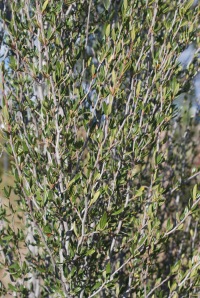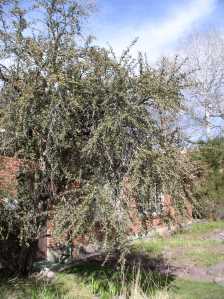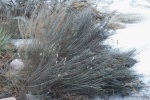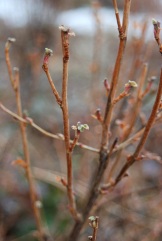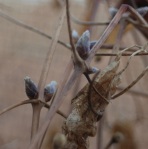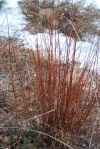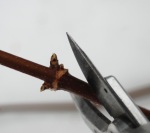I just love Curl-Leaf Mountain Mahogany (Cercocarpus ledifolius) and it is way under-utilized in landscaping!
This xeric shrub – actually more like an architecturally diverse tree when it is happy – survives drought with aplomb and thrives in rocky, poor soils as well as loamy soils. It is just fine with extreme temperature ranges so it is great if you have a hot, dry spot but it doesn’t mind wind and cold. Mature plants may reach 30′ in height and are very long lived. Supposedly one was known to be 1350 years old and succumbed only to a saw.
Often found on rocky slopes throughout the Western US, it is browsed by a variety of mammals (including cottontails and deer.) When browsed it becomes bushy and thick but it’s natural habit is upright and slender when young, creating a large multi-branched canopy when mature.
Curl-leaf Mountain Mahogany’s beautiful light grey bark is a terrific background for it’s dark green leaves, which though narrow, elliptical, curved (hence the common name) and rather leathery, are evergreen! Clusters of yellow-orange trumpet-like flowers cover the branches in early summer.
Slender, tapered achenes (seeds) approximately 1/2″ in length have two inch long, curled, wispy awns that make the shrub look like it has curly hair. Seed production is quite variable depending on the climactic conditions of various years.
This beautiful member of Rose (Rosaceae) family is useful as a focal point of a large garden space or in a landscape setting that calls for a plant with visual movement and interest. It’s hardy, needs little care and provides green color all year long.

